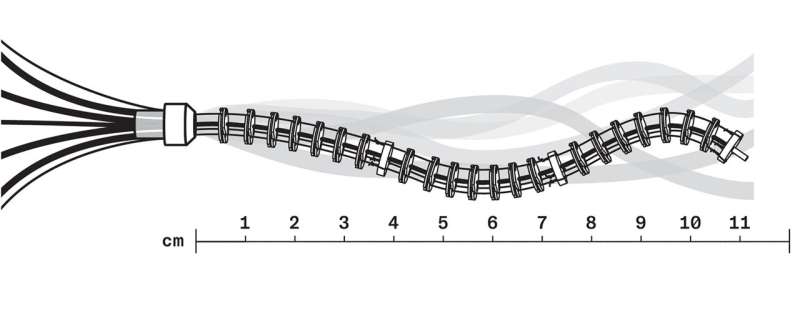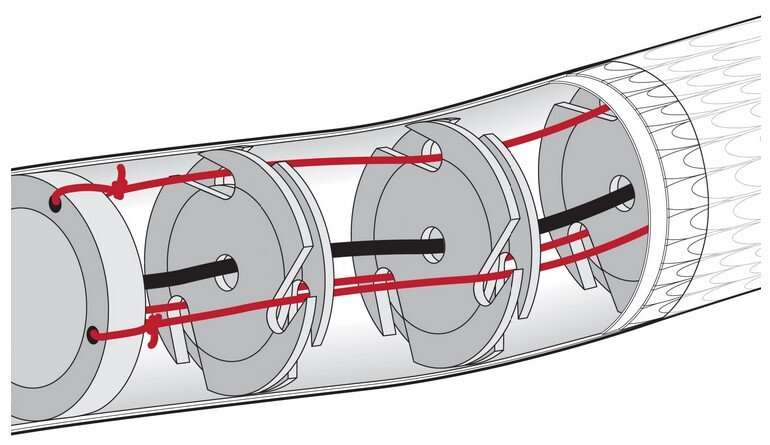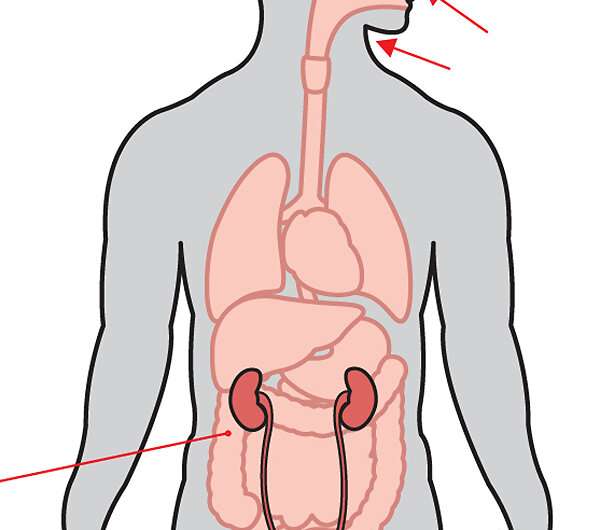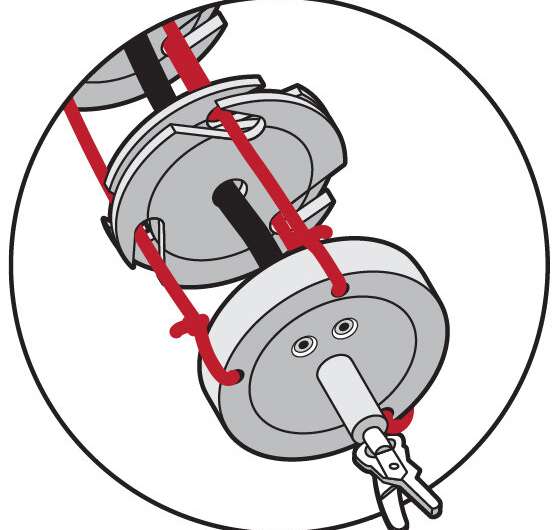How a slender, snake-like robot could give doctors new ways to save lives

Jessica Burgner-Kahrs, the director of the Continuum Robotics Lab at the University of Toronto Mississauga, and her team are building very slender, flexible and extensible robots, a few millimeters in diameter, for use in surgery and industry. You might call it "zoobotics."
Unlike humanoid robots, so-called continuum robots feature long, limbless bodies—not unlike a snake's—that allows them to access difficult-to-reach places.
Consider a neurosurgeon who needs to remove a brain tumor. Using a traditional, rigid surgical tool, the surgeon has to reach the cancerous mass by following a straight path into the brain, and risk poking through—and damaging—vital tissue.
An associate professor of mathematical and computational sciences at U of T Mississauga, Burgner-Kahrs envisions a day when one of her snake-like robots, guided by a surgeon, would be able to take a winding path around the vital tissue but still reach the precise surgical site. Previously inoperable brain tumors might suddenly become operable.
"It could revolutionize surgery," she says.

Burgner-Kahrs, a computer scientist and mechanical engineer, says her lab is also developing a more advanced generation of continuum robots that are equipped with sensors and can partially steer themselves. A surgeon would have to operate the robot remotely with a computer, but the robot would know how to avoid obstacles and recognize its destination. A surgeon could deploy one of these robots to collect a tissue sample from the abdomen, for instance, or inject a cancer drug directly into a tumor in the lungs.
There are uses outside the human body, too.

A continuum robot could slide through the interior of a jet engine, inspecting it for damage. The lab is experimenting with novel forms that are even more dexterous and extensible. One recent design, with potential search-and-rescue applications, is inspired by origami: it's very light, and can elongate up to 10 times further than other designs.

Next-generation continuum robots
To develop robots that can be used safely in a variety of medical and other applications, Burgner-Kahrs aims to answer the following questions:
- How can we control continuum robots so they move even more precisely through constrained and tortuous environments?
- How can we design a more intuitive interface between human and robot? Can we achieve a fully autonomous robot?
- How can we use multiple continuum robots in tandem to complete a task collaboratively?


















